
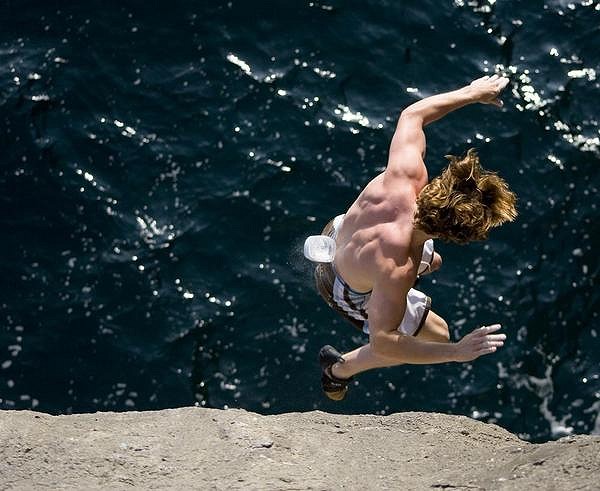
I'll stick my neck out here: DWS came to be because it's the purest form of climbing. Let me clarify this: I mean climbing as in fingertips-on-rock, as in aesthetics of movement, as in unencumbered, as in FREE. You won't get the same feeling from dragging a full rack and two ropes up a classic trad pitch, and you won't find the same experience on a hard sport route, with a harness and rope always to hand.
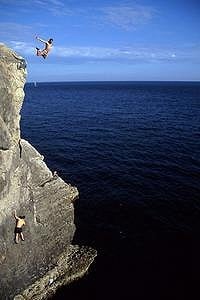
DWS involves climbing on rock that has been developed in one of three ways. Here's the gen, and with examples:
Traditional cliffs. These includes venues such as Conner Cove in Dorset, and Berry Head in Devon. The routes at these venues were first developed as traditional routes; even the traverses were first climbed with ropes and gear! The routes then fell prey to the deep water soloists...
Sport cliffs. The most famous example of this is Dorset's Lulworth Cove, which was developed as a sport crag in the early nineties. It has since lost just about all of its 'roped attention'!
DWS cliffs. A look at the routes and the history of Cave Hole, down on the Dorset Isle of Portland, tells us that this superb area was mostly developed as a solo cliff, ie. just about all the routes here were first climbed without ropes. Pembroke's Barrel Zawn is another great example of this.
So how do I get started with DWS?
It won't cost a lot to get going with DWS! You'll need a selection of rock shoes (three pairs should be enough), a slightly larger selection of chalk bags (say half a dozen), and a short rope and a little gear to set up the occasional abseil or safety/exit rope. Add to this a few pairs of shorts and T-shirts - and a camera, of course.
What else do I need to know?
There's slightly more to DWS than just jumping on a route. Here's a short list of the things you'll need to think about before you put your rock shoes on:
The crag.
Get familiar with your venue. Know the height, the top-outs, the depth of the water, even the height of the crux, if possible. Always know your shortest/fastest exit from the water, especially in early season, when the water's cooler.The tides/sea state.
Get a tide timetable, and get well acquainted with it! Tides are your key to DWS, so get familiar with EVERY aspect of them – their timing, their (mood) swings, and their variations from venue to venue. For on-line tide information, go to http://news.bbc.co.uk/weather/coast_and_sea/tide_tables/Splashdowns.
The art of falling. Some practice jumping will get you acquainted with your 'entries', but always start these from low down... You'll need to learn how to hit the water with reasonable finesse – this art becomes more important as you venture higher.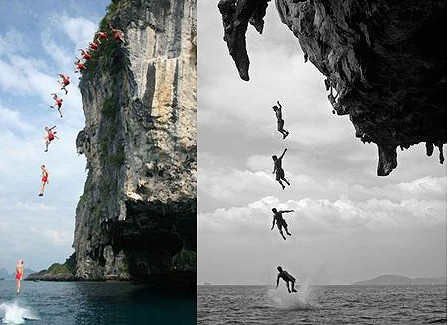
General safety.
Go to the crag in a group, and climb within sight of other folk. Also important is someone who can jump in at short notice; a bad fall might result in need of a little assistance. Also bear in mind that being a strong/confident swimmer will assist you greatly – it's true to say that weak swimmers have less confidence when deep water soloing. With this in mind, you might consider a boat of some sort at the crag – these are fun, and provide a little additional safety – even a basic inflatable kiddy boat will give good value!DWS starter venues of choice?
Here's four venues that offer the DWS beginner with enough water and accessible routes to get started.
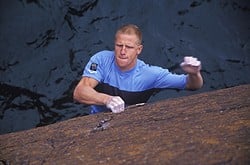
© Mike Robertson Barrel Zawn, PembrokeOne of the best beginner's venues in the UK. Excellent short routes on perfect sandstone, and all above nicely-placed above good water. |
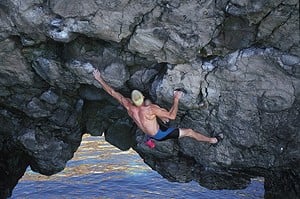
© Mike Robertson Lulworth Cove, DorsetA little tougher with the grades, but a stunning venue, with pockets galore. The traverses prove a little easier than the vertical routes. |
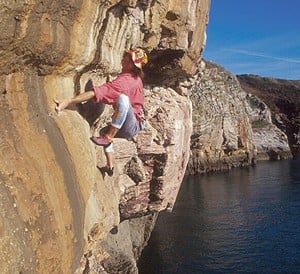
© Mike Robertson Devon/Berry HeadJust brilliant. Devon's long traverses include Magical Mystery Tour and Rainbow Bridge – two of the best sideways expeditions in the known world. Add to this the vertical routes, and you have utopia. |
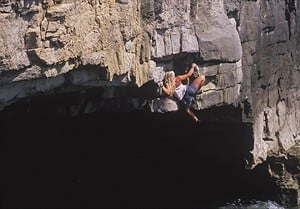
© Mike Robertson Cave HoleDorset's more tidal crag, but none the worse for it. Time it well, and you'll find plenty of short and spicy routes on great limestone. |
DWS Guidebook
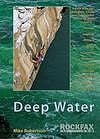
The routes in the guidebook are described in full and are attributed Sport Grades in conjunction with the now accepted S-grade that gives an indication of the climb's seriousness, with regard to height above the water, and tide considerations. The difficulty of the routes included spans all grades, ranging from dreamy grade 4s, 5s and 6s above the warm waters of Asia and the Mediterranean to many hard grade 7s and 8s, some above the less-tepid seas of Northern Europe and the Southern Ocean.
All areas are covered by colour photodiagrams and the book is enticingly illustrated with many stunning action photographs, the majority taken by Mike Robertson.
Mike has climbed worldwide and in Dorset for over 20 years. He is a professional outdoor photo-journalist.
Deep Water is avalable from:www.rockfax.com
Other DWS Media and Resources

Keith Sharples has a Deep Water Soloing - Photo Gallery at www.keithsharplesphotography.com
Also check out dwsworld.com, a web site dedicated to the art of Deep Water Soloing.



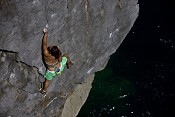
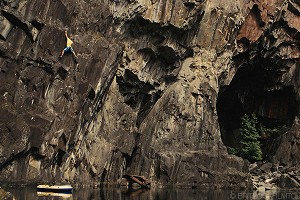
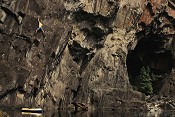




Comments